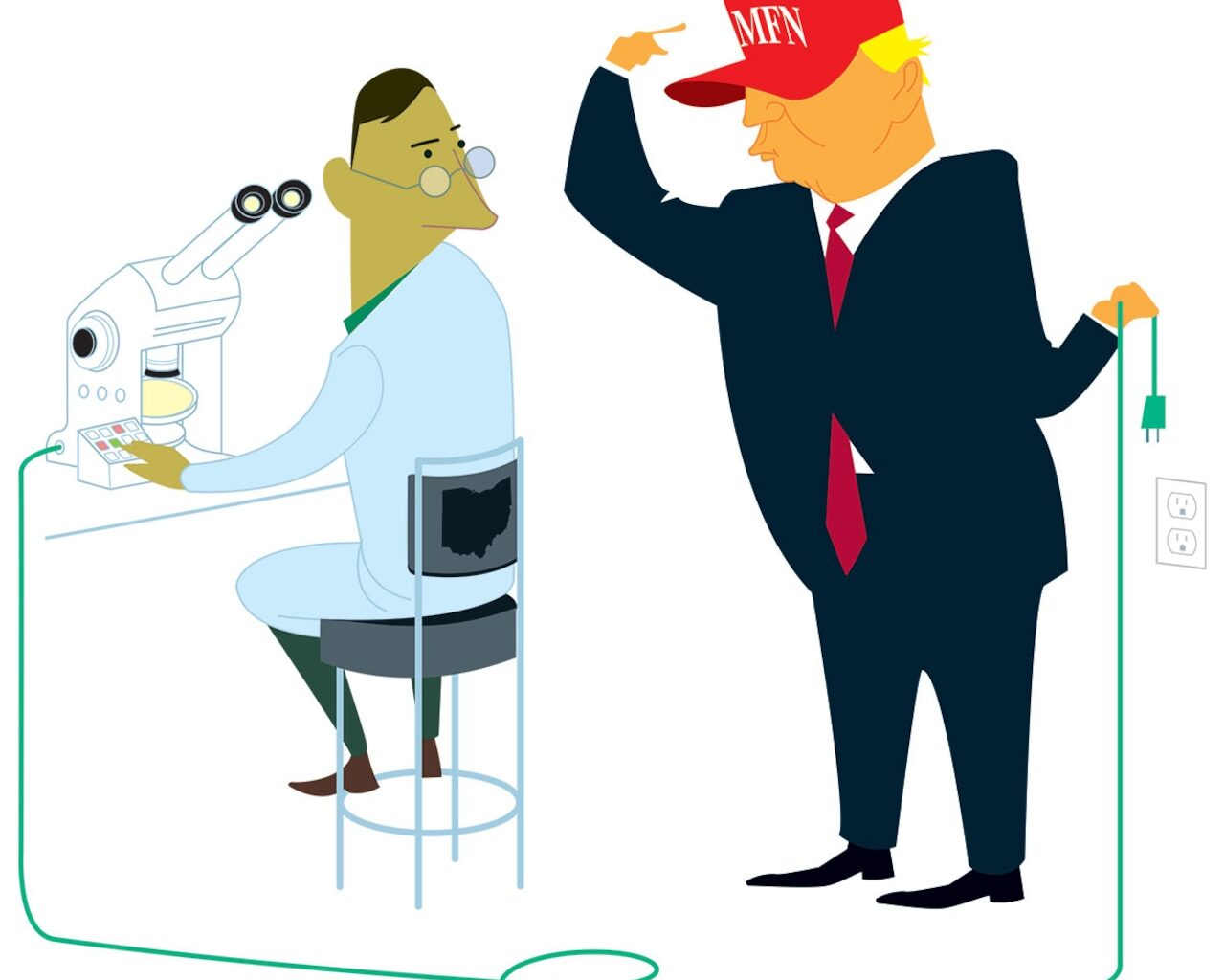Ohio is experiencing a bioscience renaissance, transforming into a national leader in life sciences innovation, workforce development, and economic growth. This momentum is not merely a fleeting trend but a testament to our state’s strategic investments, collaborative spirit, and commitment to fostering a thriving bioscience ecosystem.
Bioscience sector growth is happening across the state. Cincinnati’s life sciences industry achieved a Gross Regional Product of $6.1 billion in 2023, marking 52% growth since 2019. In Columbus, Cleveland, and Cincinnati, “Innovation Districts” have been established through partnerships among JobsOhio, academic institutions, and health care organizations, and comprise the Ohio Discovery Corridor. They serve as catalysts for research, development, and commercialization. A collaboration between The Ohio State University and Nationwide Children’s Hospital is driving advancements in cell and gene therapies for rare diseases.
Ohio is building a skilled bioscience workforce through targeted educational initiatives, such as the biotechnology bootcamp at Columbus State Community College. Supported by a $250,000 investment from the Ohio Life Sciences Association, this program equips students with the essential skills necessary for careers in biomanufacturing and the life sciences.
Amgen’s recent $900 million expansion of its biotech manufacturing facility in New Albany, northeast of Columbus, increases its regional investment to over $1.4 billion and creates 750 new jobs, highlighting Ohio’s attractiveness for biopharmaceutical manufacturing.
Moreover, Ohio’s bioscience workforce has garnered national attention, with cities like Columbus and Cincinnati recognized as emerging hubs for biotech research talent. From January 2021 through December 2024, Ohio’s life sciences companies posted a total of 83,851 unique job opportunities.
Unfortunately, this momentum would slow down if a proposal called the “Most Favored Nation (MFN)” policy is implemented. MFN would introduce foreign price controls for prescription drugs.
President Donald Trump recognizes that the cost of medicines in foreign countries is much lower than in the United States. This is because, in many other countries, the government sets drug prices, and manufacturers must accept the pricing terms.
 Steve Stivers is president and CEO of the Ohio Chamber of Commerce.Courtesy of the Ohio Chamber of Commerce
Steve Stivers is president and CEO of the Ohio Chamber of Commerce.Courtesy of the Ohio Chamber of Commerce
People in foreign nations who depend on government-run health systems frequently experience delays in care, reduced access, and fewer options for treatments. In nations with price controls, fewer than two-thirds of new medicines are available to patients. For example, according to one analysis, Canadians had access to about 11% of cancer medicines, on average, while Americans had access to about 90% of cancer medicines.
The MFN pricing approach will lead to setbacks for patients and setbacks for innovation. America leads the world in discovery of cutting-edge health treatments because of many factors, including investment in research and a skilled workforce. Price controls will stifle the very assets that contribute to our thriving bioscience sector.
 Eddie Pauline is president and CEO of Ohio Life Sciences.Photo courtesy of Ohio Life Sciences
Eddie Pauline is president and CEO of Ohio Life Sciences.Photo courtesy of Ohio Life Sciences
America’s health care system is not perfect, and we encourage Ohio’s congressional delegates to support policies that lower costs for employers and consumers. We support current efforts to address the complexities of our drug supply chain and urge reforms that address cost while preserving investment in research. We appreciate that MFN was not included in the recent budget reconciliation bill. However, this proposal could gain traction through executive or congressional actions in the future.
Ohio’s bioscience boom is a success story for our economy and patient care. However, Ohio’s elected leaders need to reject MFN and price control policies that discourage innovation and weaken the standard of care Ohioans expect from their healthcare providers.
Steve Stivers is president and CEO of the Ohio Chamber of Commerce, the state’s leading business organization. The Ohio Chamber’s mission is to aggressively champion free enterprise, economic competitiveness and growth for the benefit of all Ohioans. Eddie Pauline is president and CEO of the Ohio Life Sciences, representing the interests of Ohio’s nearly 5,000 life sciences establishments. OLS’ mission is to grow the life sciences market. They write from Columbus.
Have something to say about this topic?
* Send a letter to the editor, which will be considered for print publication.
* Email general questions about our editorial board or comments or corrections on this opinion column to Elizabeth Sullivan, director of opinion, at esullivan@cleveland.com
If you purchase a product or register for an account through a link on our site, we may receive compensation. By using this site, you consent to our User Agreement and agree that your clicks, interactions, and personal information may be collected, recorded, and/or stored by us and social media and other third-party partners in accordance with our Privacy Policy.
